Deck fighter F-14 "Tomcat"
At the end of the 60 in the USA, the design of the long-range deck interceptor began to replace the F-4 "Phantom-2".
In the finals of the competition were projects McDonnell Douglas and Grumman. McDonnell-Douglas had a fixed-wing machine design, while Grumman's wing sweep changed.
After the air battles over the territory of Vietnam, the military wanted the developers to lay out the vertical and horizontal maneuverability characteristics created by the aircraft no worse than the MiG-21, which was then the main air rival of the US Air Force combat aircraft.
In theory, the variable geometry of the wing was supposed to give acceptable characteristics of take-off and landing with a large mass, as well as good maneuverability in close combat, high maximum supersonic speed during interception, and a long patrol time.
It was therefore quite natural that 3 February 1969 of the year, a contract was signed for the creation of an F-14F fighter with the company Grumman.
The plane was given its own name "Tomcat", which reflected the tradition of Grumman to give the names of different cats to its sea fighters, and this time accidentally connected with Vice Admiral Tom Connolly - Deputy Head of the Command for Naval Operations for aviationwho was a big project enthusiast. At an early stage, the F-14 was called "Tom's Cat" - "Tom's cat", and over time it transformed into a "Tomcat".
The exterior of the aircraft was finally formed by March 1969 of the year. Designers removed one tail and two folding ventral keel, replacing them with two-tail fin. This was supposed to give better stability in the event of a failure of one of the engines. In addition, the plane was seen a great influence of the revolutionary Soviet MiG-25.
The pace of development of the aircraft ahead of the advanced engine designed for it. Therefore, temporarily at the first experienced "Tomkaty" put Pratt-Whitney TRDDF TF30-P-412A. These engines were based on the TF-30-P TRDDF, mounted on F-111 and A-7 strike aircraft. But even increased to 9070 kgf thrust was not enough for a heavy fighter. Another problem was the unsatisfactory stability and throttle response of the TF-30 engine during vigorous maneuvering with access to large angles of attack.
Problems with power units all the time there were at "Tomkatov." Approximately 28% of all crashed F-14 were lost for this very reason. According to the American pilots F-14 copes with the tasks, but requires careful piloting, in some cases, flying at low speeds at high altitudes can be risky.
For a decade and a half, more suitable engines were searched for the F-14, but the issue was resolved only by the end of the 80-s, after installing the General Electric engine F110-GE-400, which equipped the F-15 and F-16 fighters. The process of refitting new engines occurred during 1988-90's. And in 1990-93, they launched the production of another version of TomCat with F110 TRDDF and advanced avionics -F-14D.
The minimum wing span of the aircraft was 11.65 meters, and the maximum 19.54 meters. The length is 19.1 meters, the height is 4.88 meters, the wing area is 52.49 м2. The mass of the empty aircraft was 18100 kg. Cruising speed 740 - 1000 km / h. Practical range - 2965 - 3200 km.
In service was one built-in 20-mm gun M61-1 on 675 shells, located in the nose of the fuselage. The combat load was 6500 kg on eight suspension nodes.
4 AIM-7 Sparrow - medium-range SD in a semi-submerged position, or 4 AIM-54 Phoenix - long-range SD on special platforms could be placed under the fuselage. It was also possible to suspend the 2-4 AIM-9 "Sidewinder" or AIM-120 AMRAAM - short-range SD.
The combat potential of the machine was determined by the control system weapons Hughes AWG-9.
The most long-range air-to-air aircraft "Phoenix", coupled with a unique MSA, did not make a very successful aircraft one of the best fighter-interceptors of that time.
At the time of its creation, the AIM-54 “Phoenix” long-range guided missile was unique, it had no analogues. The main feature is the combined guidance system, which combined autopilot at the initial stage and semi-active radar guidance in the middle segment with active guidance in the final segment: approximately 16-20 km. There was also a mode of passive guidance on any source of electromagnetic radiation, for example, the radar of an anti-ship missile or aircraft.
At the Phoenix rocket, the maximum launch range was 160 km, at high altitudes the rocket reached the speed M = 5. The core warhead had a radius of damage of about eight meters, providing a blast of infrared, contact or radar fuses.
In the process of developing and refining the SLA and the rocket, great difficulties arose, therefore the Phoenix rocket did not immediately become the main weapon of the aircraft. Partly, due to the high cost of a single rocket - roughly 500 thousand dollars in 70's.
In the end, the Navy decided that they needed a “long-handed” interceptor, so there was no alternative to the Phoenix.
Another factor in favor of the Phoenix - other air-to-air missiles could not intercept MiG-25 at high altitudes.
The contract for the creation of the first batch of 26 aircraft was signed in October 1970 of the year. 12 aircraft hit the flight test program. There were losses. 30 December 1970, the first car of this type crashed, but the pilots ejected.
The result of the flight tests of the aircraft was summed up by a group of Navy pilots consisting of the VF-124 test squadron. According to their commander, Frank Schlanz, the aircraft demonstrated good flight characteristics and could potentially be used to achieve air superiority, as well as air defense of the naval forces.
Note that during the test flights two more aircraft crashed. 30 June 1972 crashed pilot Bill Miller, who ran the tenth prototype during a demonstration flight over the Patuxent River airbase. The cause of the disaster has not yet been clarified. Just a couple of weeks before his death, Miller took off from the top ten from the aircraft carrier Forrestal. 28 June he first got on the aircraft carrier.
20 June 1973 of the year was lost another aircraft, at number five, which produced the launch of the UR Sparrow. The rocket came off its rails horizontally, hitting the fuel tank, located in the central part of the fuselage. As a result, there was an explosion and fire. But as there was no warhead in the rocket, the pilot and operator managed to successfully eject.
In April, the 1972 of the year began testing the F-14 / UR Phoenix fighter complex, within which the mass-dimensional rocket models suspended from Tomcata were discharged. And in July, the epoch-making event of 1972 happened: while working on the aircraft / rocket system “Phoenix”, the AQM-37A Stiletto target, which imitated the MiG-25, successfully hit the target. At the time of launch, the interceptor was at an altitude of 14 300 meters at a speed of M = 1,2 at a distance of 65 km from the target.
Another significant event is the simultaneous launch of guided missiles on several targets. In the middle of December, 1972 was for the first time carried out the simultaneous launch of two Phoenix missiles on two targets imitating Soviet anti-ship missiles X-22.
In the future, rockets were launched against targets creating radio interference and simulating another threat from the USSR Tu-22M - a bomber famous in the West, like the MiG-25. In April, 1973 of the year, the Tomketa crew managed to detect the BMQ-34 target, which simulated the Backfire at a distance of 245 kilometers, and then destroy it at a distance of 134 kilometers from the Phoenix missile launch point. And in November, 1973, pilot John Wilson and armament operator Jack Hover, managed to intercept six targets at once. In the American press, this episode was called "record." For about forty seconds, Tomkat launched six guided missiles at six different targets, which were from 80 to 115 kilometers. Four missiles successfully hit the targets, one failed the equipment, and one launch was considered unsuccessful due to a target malfunction.
However, the new weapon system had significant drawbacks. First of all, the system is difficult to master and operate. Secondly, the high cost of one rocket. Before 1975, only the most experienced crews launched rockets. A test of the ability of ordinary combatant pilots in the closest possible to combat conditions conducted on a three-day exercises, which was attended by 1-th carrier-wing aircraft carrier "John F. Kennedy." The crew of the F-14A as part of the operator Lieutenant Kray and the pilot Lieutenant Andrews managed to hit the target CQM-10B "Bomark", which imitated the MiG-25. True, it was only a theoretical test of the possibility of using guided missiles by ordinary crews. Only a very small number of combat pilots and operators were able to launch an AIM-54 guided missile. The cost of "Phoenix" was too high to use it during combat training.
However, while the F-14 was all right with the “long arm,” the maneuvering air combat was not so smooth. In order to conduct an offensive air battle, the fighter must have a decent thrust-to-weight ratio, which is what the F-14A lacked. According to a number of experts and pilots, Tomcat needed an 30% increase in engine thrust. Left much to be desired and horizontal maneuverability, several aircraft fell due to the exit into a flat spin when training maneuvers. As it turned out, when entering at high angles of attack, the plane begins to lurch and scour.
If, at such speeds, we simultaneously use a rudder and a differentially deflected stabilizer embedded in the control system, then very large angular velocities arise, which contributes to the departure into a spin.
In this regard, the question arose about the feasibility of extending the life of multi-purpose aircraft F-4 and the need to start developing the deck version of the machine F-15.
As a result, the admirals decided to create a mixed fleet of small, simple and cheap, as well as heavy, complex and expensive fighters, following the example of the Air Force. These conversations stimulated the development of the multi-purpose fighter F-18 "Hornet".
The first two combat squadrons were assigned to the Eisenhower nuclear aircraft carrier. On its first voyage with the Tomcats, the ship departed 17 September 1974. During the trip, the pilots flew 2900 watches on the F-14, making a total of 1600 landings and takeoffs to the deck. 460 was held at night. During this operation, the first accident happened - on January 2, an engine caught fire at one of Tomcats, but the crew managed to eject. The planes also took part in the Vietnam War, covering the exit of the Americans from Saigon.
The typical tasks of the deck F-14 are interception and patrolling. Usually a pair of aircraft patrolled about fifty minutes at a distance of 550 kilometers from the aircraft carrier. In the combat load "Tomkata" was four guided missiles "Phoenix", two more "Sparrow", two "Sidewinder", as well as two PTB, whose capacity was 1060 liters. If the fighter flew to intercept, then the external load was similar cargo. With a flight speed of M = 1.5, the combat radius reached 247 kilometers.
The second aircraft carrier that received the "Tomcat" - "John F. Kenedy." In 1976, two squadrons of the Tomcats took up combat duty on the aircraft carrier America. The aircraft entered its peak at 1977, when they appeared on the aircraft carriers Kitty Hawk, Constellation, Nimitz.
Total "Tomkatami" armed 22 deck squadrons, as well as two training and four reserve squadrons. X-NUMX F-557F machines were produced, including 14 for the Iranian Air Force and 79 experienced, as well as X-NUMX units F-12B, 38 F-14D.
After entering the divisions with "Tomkaty" began to occur flight accidents. For example, I had to stop flying this type of machine twice after two catastrophes with an interval of two days 21 and 23 in June of 1976. After a thorough investigation and inspection of all aircraft, the situation has not changed. 14 September one of the aircraft crashed into the water during takeoff, sinking in shallow water, next to the ships of the Soviet Navy. It is not known what the reaction to the plane was from the Soviet military, but the Americans launched a rabid activity to prevent the potential enemy from raising the plane. A rescue vessel and two tugboats entered the disaster area. The plane was able to lift and deliver for inspection on the territory of the British base Rosyth. Missiles from the aircraft were removed at the bottom, with the help of the US Navy research submarine NR-1. By the middle of the 1984 year, accidents and catastrophes had happened to 70 fighters. The main reasons included stalling and fire in engines.
Along with this, there was a low reliability of material support for new aircraft, the engines were unreliable. On board the aircraft carrier was at least eight turbofans TF-30, which were to replace the failed. Normal combat readiness is 8 from Tomcat's 12.
The real fighting of the F-14 hit at the end of the summer 1981 of the year. The US aircraft carriers Forrestol and Nimitz were overflying the Libyan Su and MiGs. During one of them, two "Tomcat" from the VF-41 squadron shot down two Su-22.
There were fighting losses. In winter, 1982, the Syrian air defense missile system destroyed three "Tomkata", which accompanied the A-6 attack aircraft to attack various targets in Lebanese territory. Six aircraft carriers were involved in Operation Desert Storm. Four of these were F-14 aircraft. "Tomkaty" accompanied strike aircraft, carried out reconnaissance missions. Tomkat managed to shoot down one Iraqi helicopter. Iraq’s air defenses, in turn, shot down one Tomkat.
Judging by the experience of the combat use of "Tomkatov", we can conclude that the aircraft failed to solve the tasks assigned to it, especially if analyzed in accordance with the criterion of "cost-effectiveness". The loudest victories of F-14 passed over the territory of the Gulf of Sidra during battles with Libyans. The conditions were almost range, no maneuvering battles were not.
Many experts doubted the realism of the technical characteristics that the Americans stated.
Judging by the report that was prepared for the American Congress, it is impossible to accurately predict the likelihood of an AIM-54 rocket hitting due to the lack of launch statistics in real conditions. The Americans invested a lot of money in the development of the AIM-54C variant, which could intercept low-altitude targets with an EPR near 0.5 m2. However, even she hardly intercepted a low-altitude cruise missile, the speed of which is more than M = 3.
After the end of the Cold War and the final degradation of the Russian naval aviation in the early 2000s, the gradual withdrawal of the “Tomcats from the US Navy began. They were replaced by the master of all trades "Superhornet."
At the end of their combat career, F-14 fell into combat during the "anti-terrorist" operation in Afghanistan. There were no encounters with the Taliban aircraft, the deck interceptors were working with adjustable bombs from a great height.
In 2006, the US Navy officially parted ways with these aircraft. For the United States, this was a landmark event; during the Cold War years, this car was considered the main interceptor for carrier-based aviation, which was highly appreciated by professionals. In 1986, the cult film "Top Gun" was released, the main role in which was played by Tom Cruise.
At the moment, several aircraft "Tomkat" "support in flying condition in training and test American centers.
The only country that continues to use Tomkat is Iran. True, and there they will soon write off due to lack of spare parts.
The US government has limited the sale of retired aircraft to private individuals, unlike other types of aircraft. Thus, the US government wants to protect itself from buying spare parts by Iran.
information sources:
http://www.airwar.ru/enc/fighter/f14.html
http://www.airwar.ru/enc/fighter/f14d.html
http://www.airbase.ru/hangar/planes/usa/f/f-14/
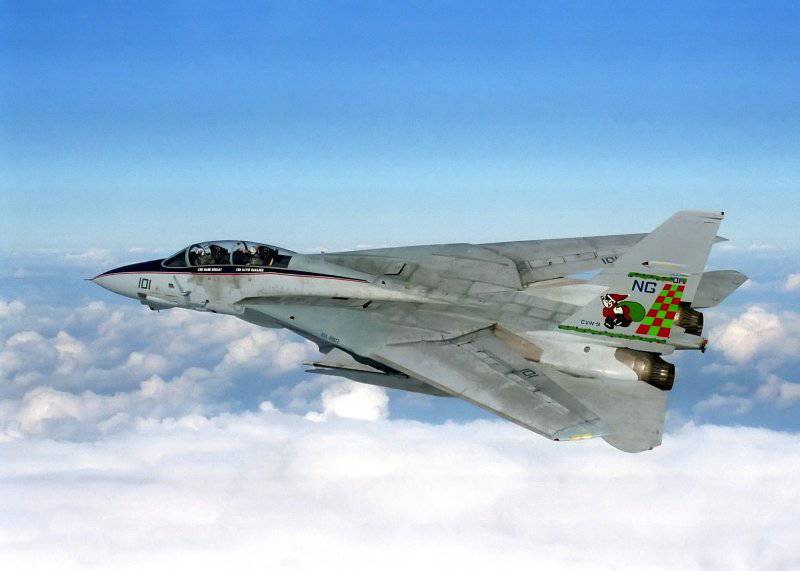
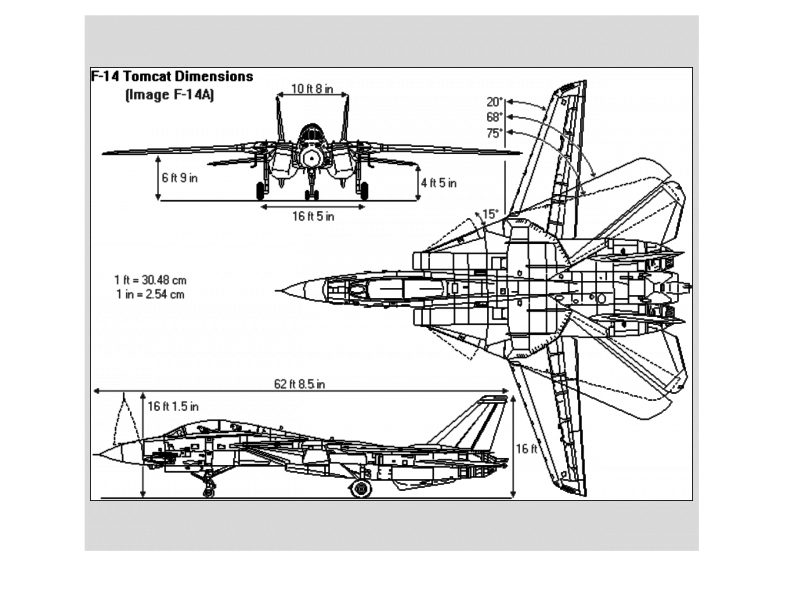
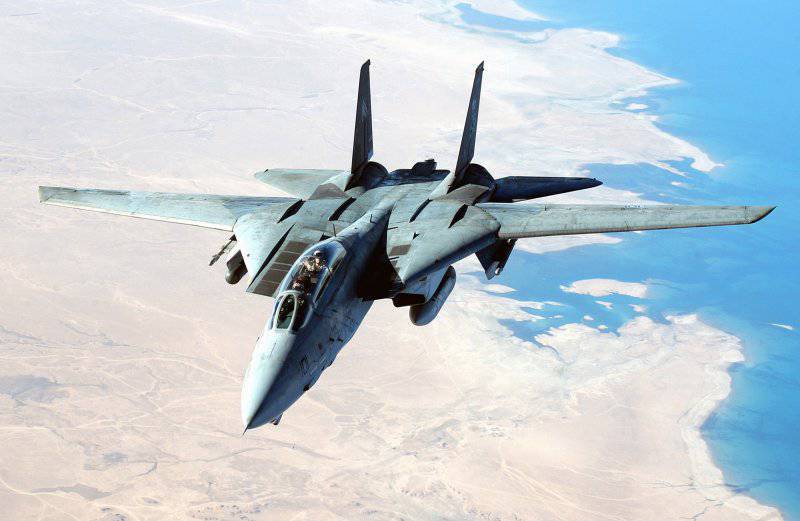
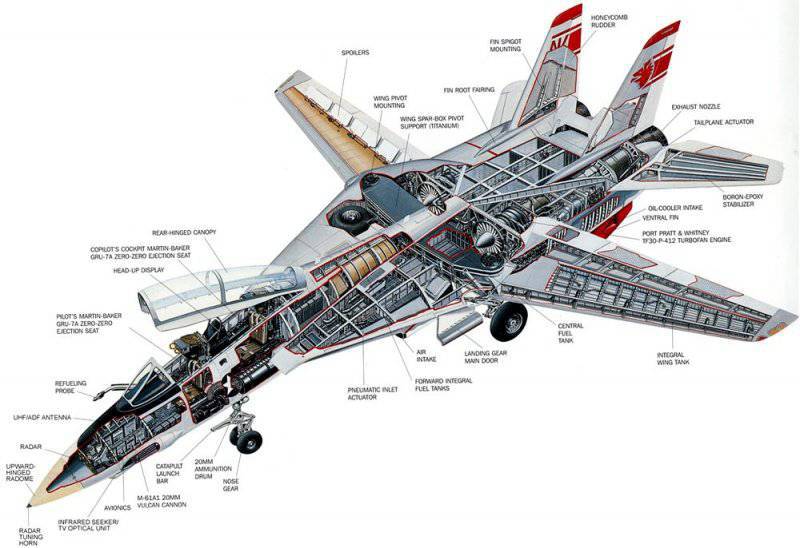
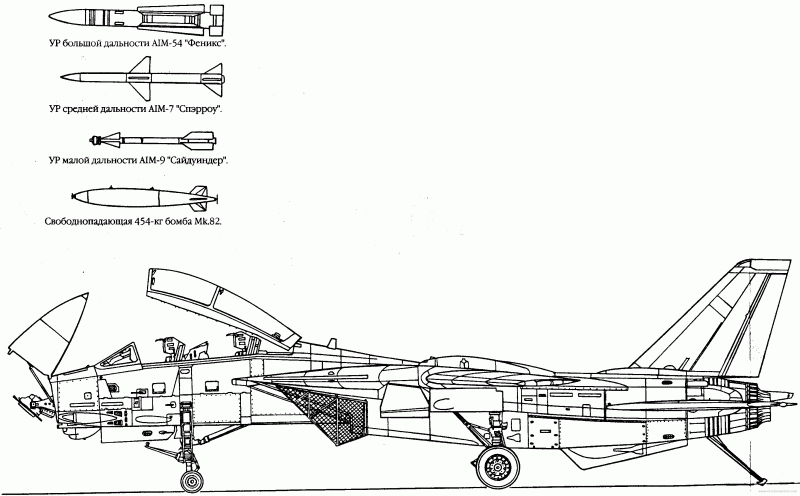
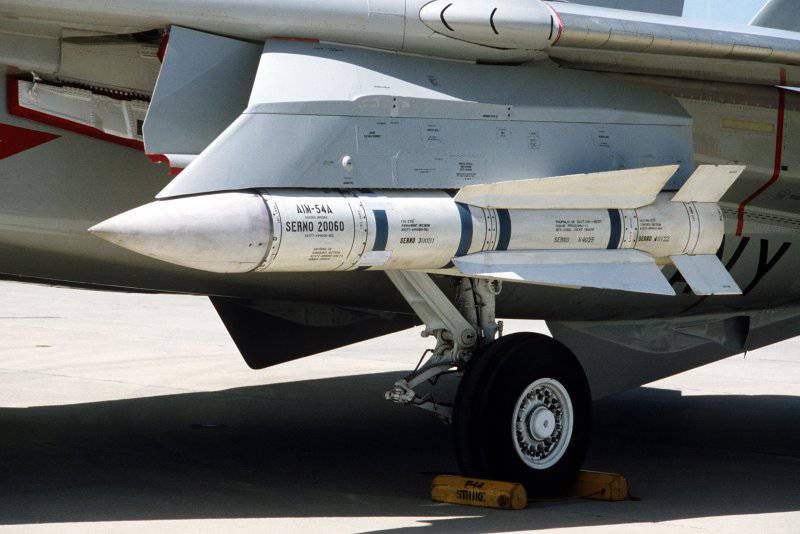
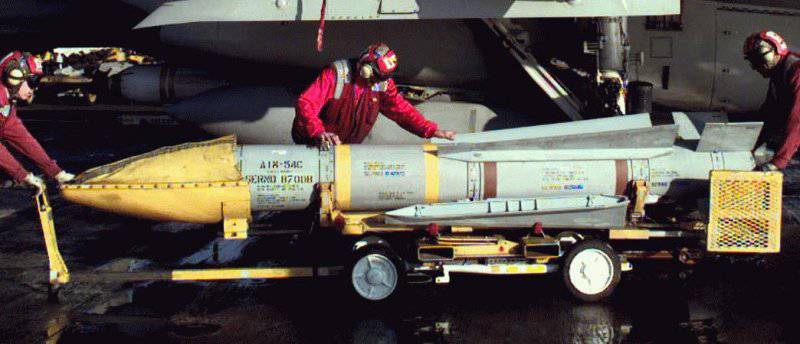
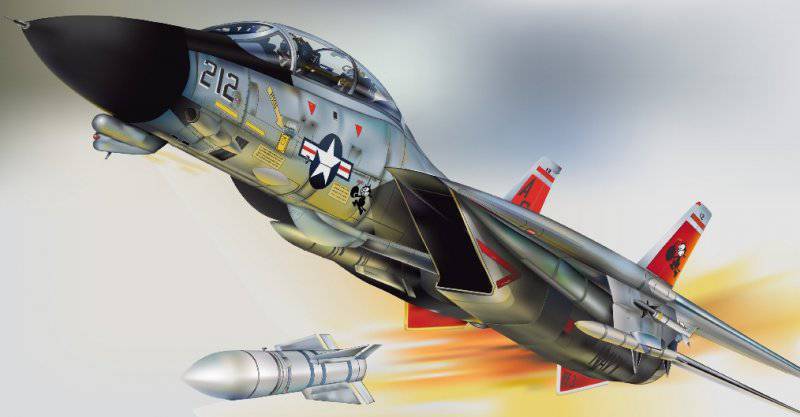
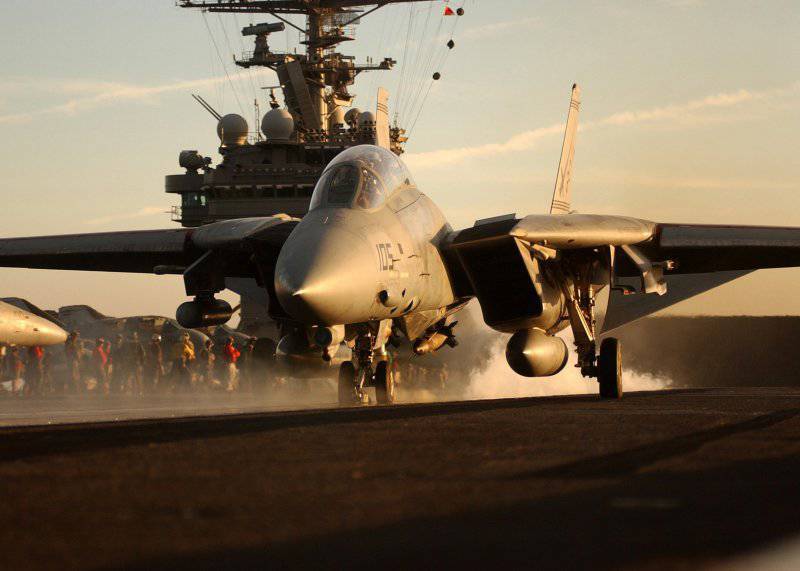
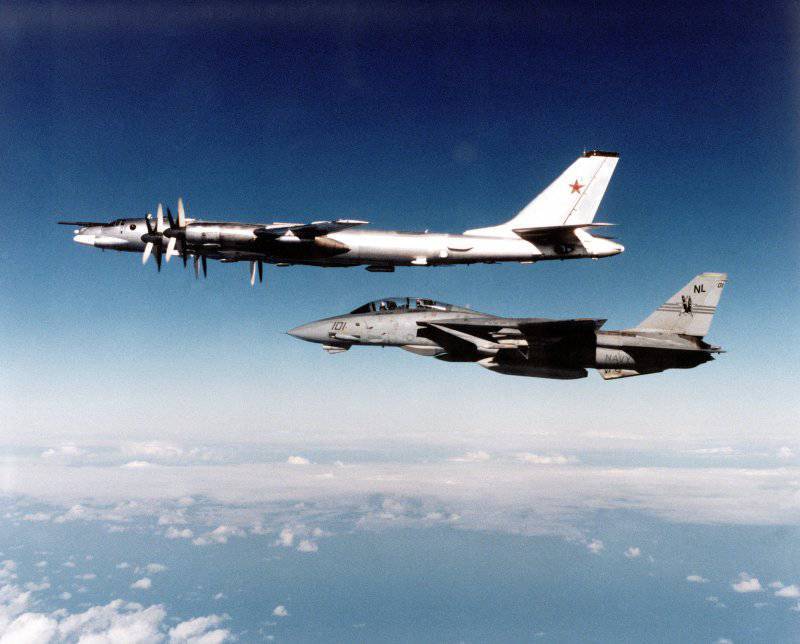
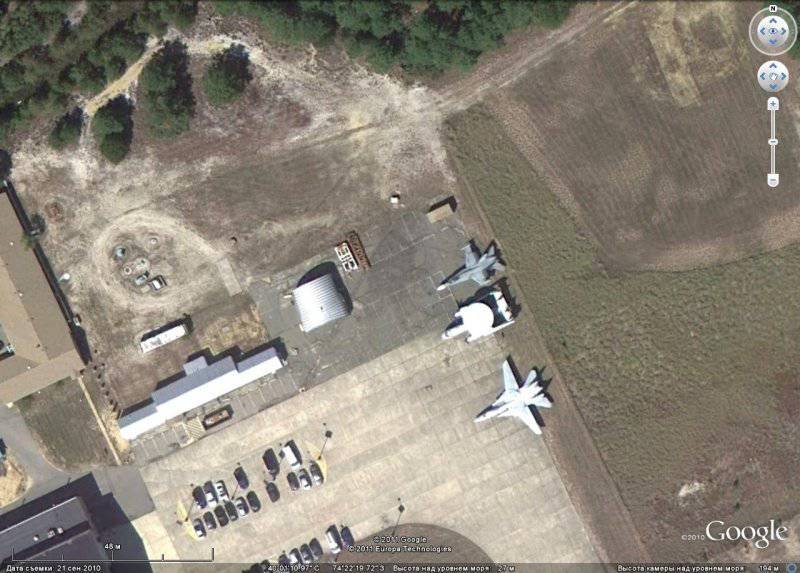
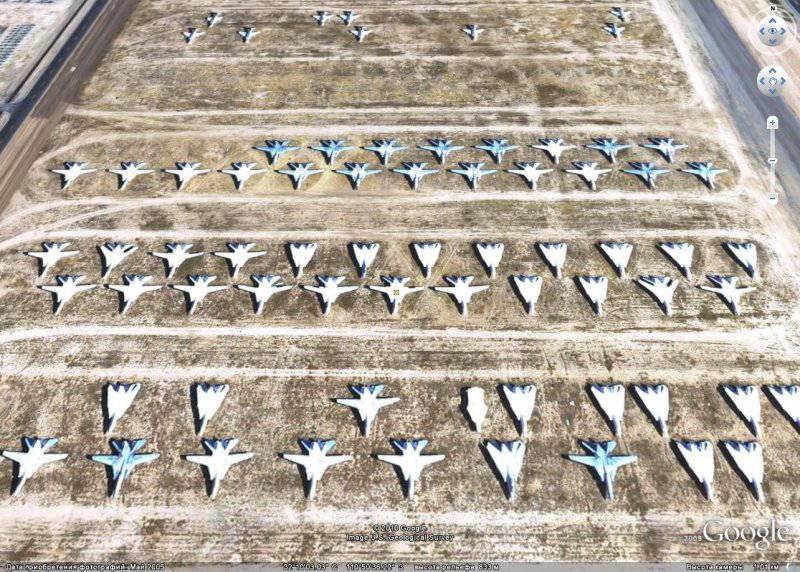
Information